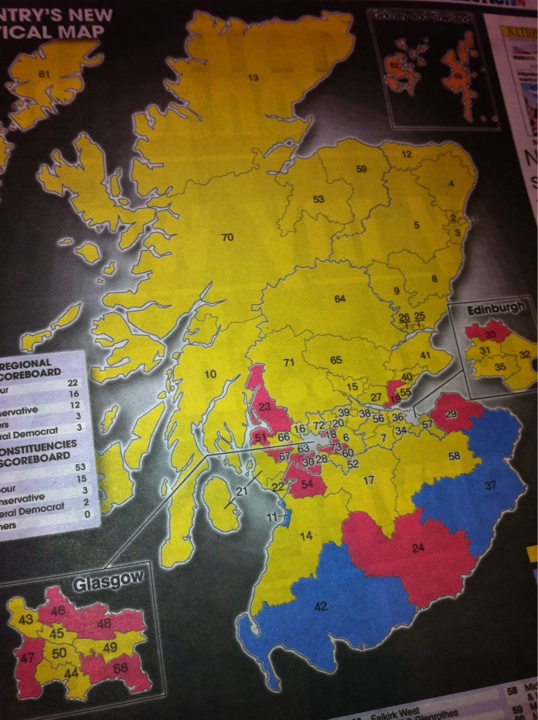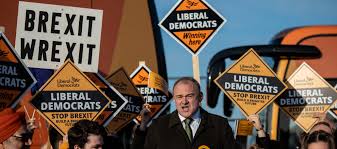Don’t know about you but I am not am not a fan of the decorator. SNP yellow is splashed far and wide following its historic May 5 election victory as it routed Labour and swept much else aside.
In the Guardian today Jonathan Freedland has some sober words for Ed Miliband and the implications of this new political map of Scotland. He asks what it could mean for Labour’s ability to govern again. It is a scenario that has been spoken off before, but no one expected such a strong performance by the SNP and its leader Alex Salmond. Labour’s Scottish leader Iain Gray proved to be no match for his rival and I doubt there was much protest as Gray tendered his resignation as the scale of Labour’s loss became clear. Gray struggled to be recognised despite being leaders since 2008.
Labour’s problem in Scotland is compounded by its inability to make inroads in the south of England. The polls say Scots don’t want independence, but then they also said just a couple of weeks ago that Labour could win as many as 52 seats and in January was 16 points ahead of the nationalists.
“And if he [Salmond] won a referendum and the union that has lasted three centuries were to break up? Obviously, the cultural and constitutional impact would reverberate for generations. But the narrower electoral consequences would endure too. An independent Scotland would deprive Labour of its most solid base, all but ensuring a permanent Tory majority in Westminster.
“That is the sharpest lesson for Labour, on what was a tepid night for the party at best. It can no longer rely on Scotland; it has to be competitive in England. Otherwise, the future is clear, but it is definitely not orange. The future is blue,” Freedland writes.



